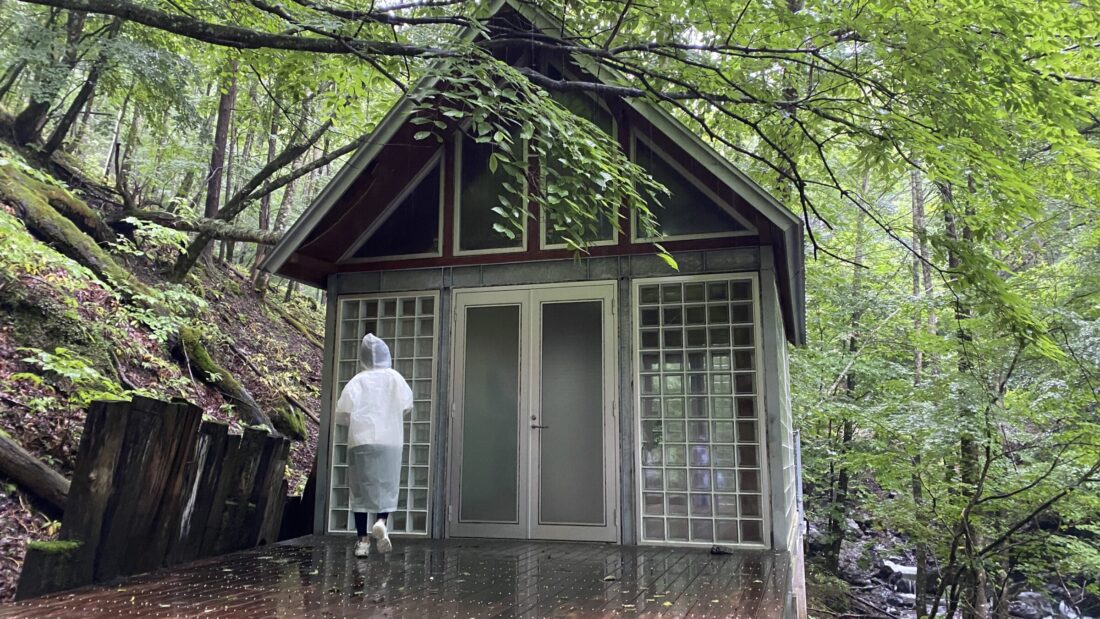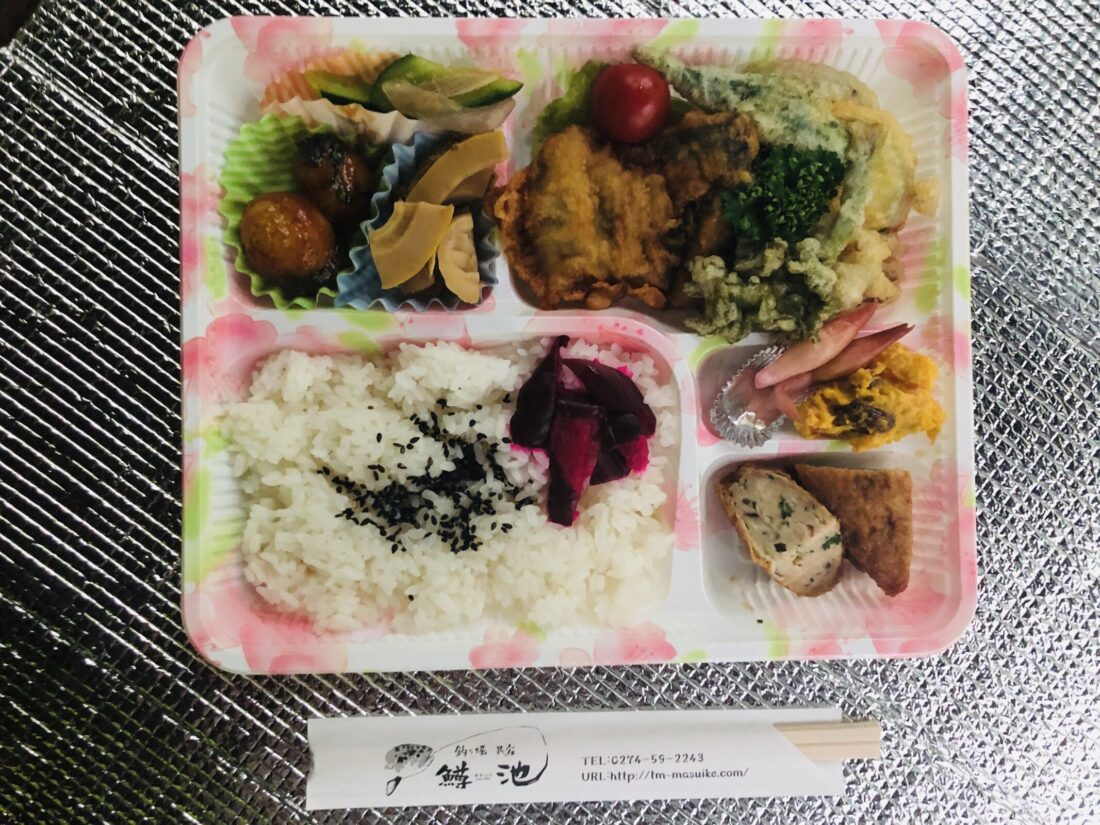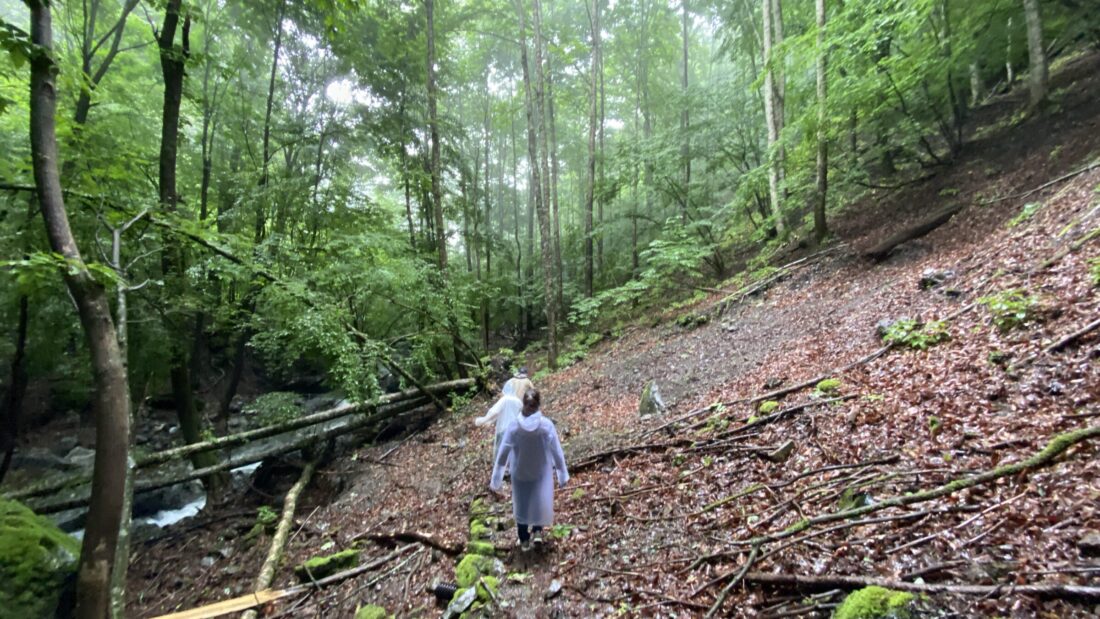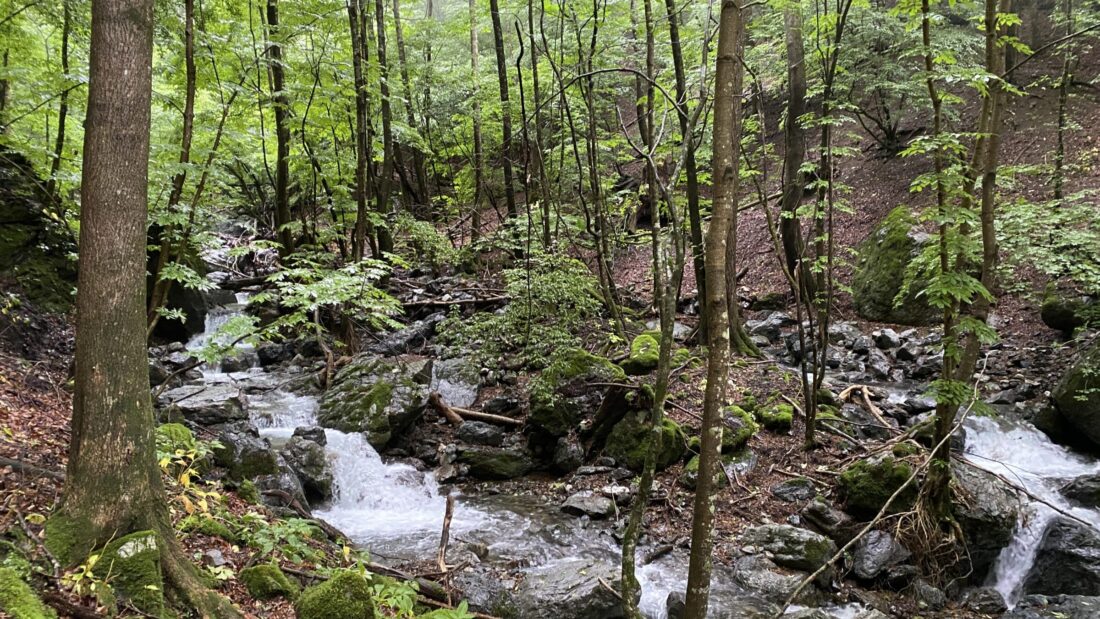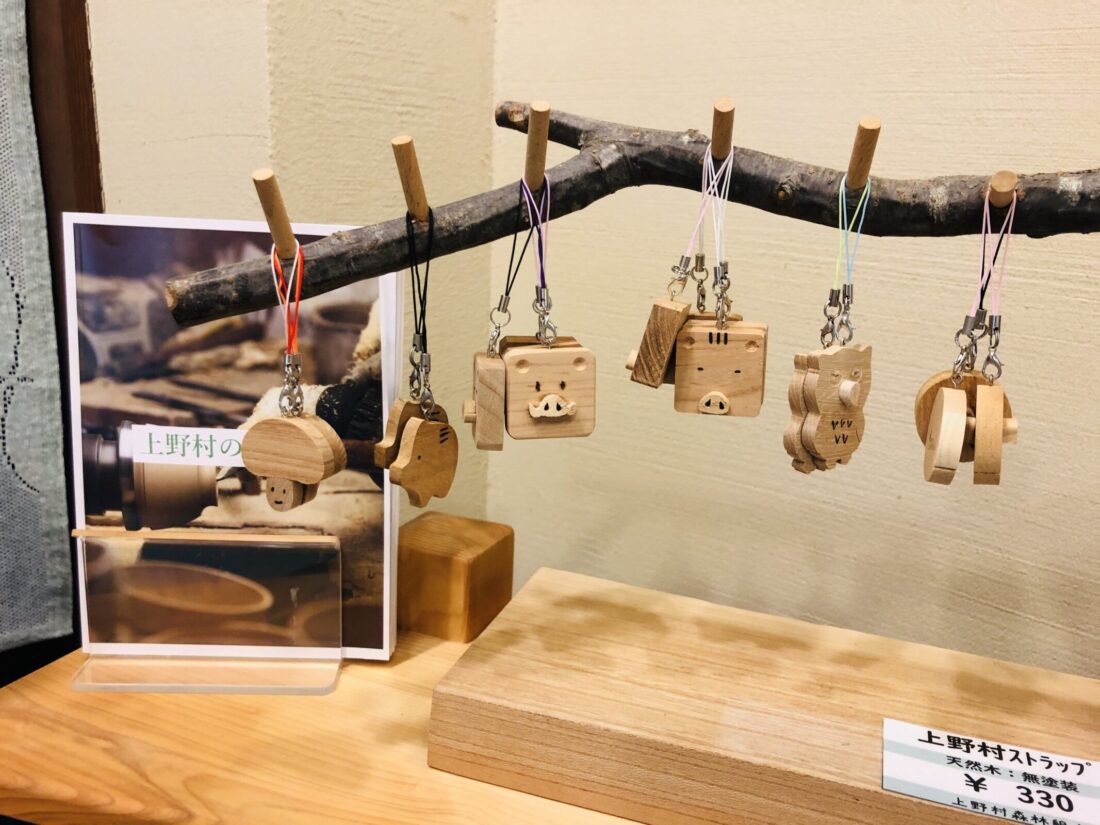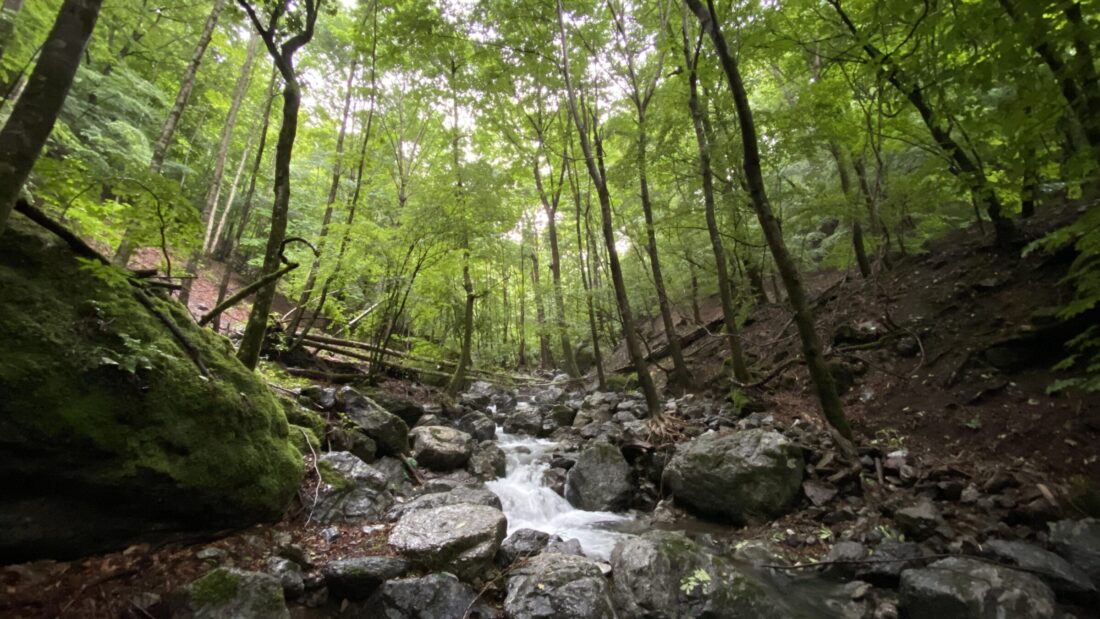
Japanese Forest Therapy, or Forest Bathing, is the therapeutic act of going on a guided relaxation walk through nature. The Nakanosawa Valley in Uenomura Village is one of only two sites in the Kanto region officially designated for forest therapy by the International Society of Nature and Forest Medicine.
We went to try out a session on a drizzly day in early July, when the trees were covered in ultra-green new leaves. The day was filled with lots of opportunities to see, hear, feel, and smell the forest and the natural landscape. Our guide showed us the way at a leisurely pace suitable for all ages, instructing us on lots of different ways to relax. Activities throughout included meditation, mindfulness, and yogic breathing, so if you’re a yogi or mindfulness practitioner, this would be a great fit for you. As a possible added benefit, there’s no cell service on the forest trails, so it’s the perfect opportunity to enjoy a mini digital detox.
Forest Therapy has been scientifically proven to reduce stress and improve mood, among other benefits. See here for an overview: https://www.fo-society.jp/therapy/cn45/index_en.html
And check out some of the scientific literature here: https://www.infom.org/paperandbooks/
Continue reading for a firsthand report of the experience, or click here for practical details.
Here’s what our session was like
We met our guide, Mr. Nakamura, at the Kawa no Eki Riverside Visitors Center. It’s also possible to request pickup from Shimonita Station.
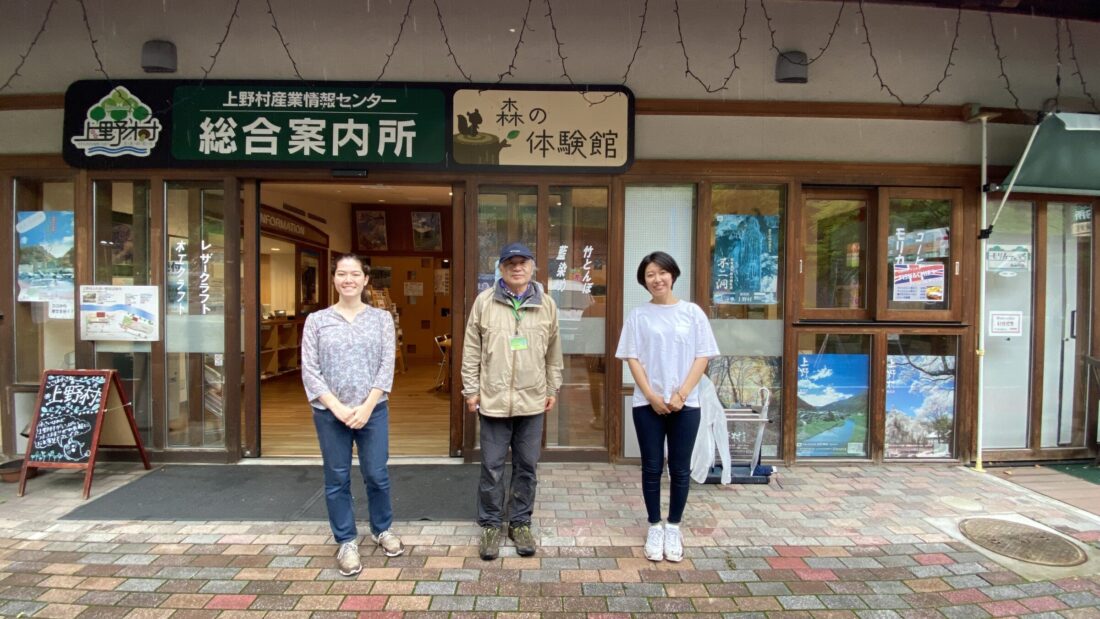
It was raining lightly the day we went, to we came equipped with raincoats. It ended up being quite muddy that day, so I would also recommend water-resistant hiking boots. If you don’t have any, sneakers should be fine too—just make sure to bring a change of socks! Bug spray also comes in handy.
The Forest Therapy area in Uenomura is off limits to regular pedestrians and cars—it’s reserved specifically for therapeutic use. Our guide drove us about 30 – 40 minutes to the course, stopping along the way to open the gate into the exclusive area.
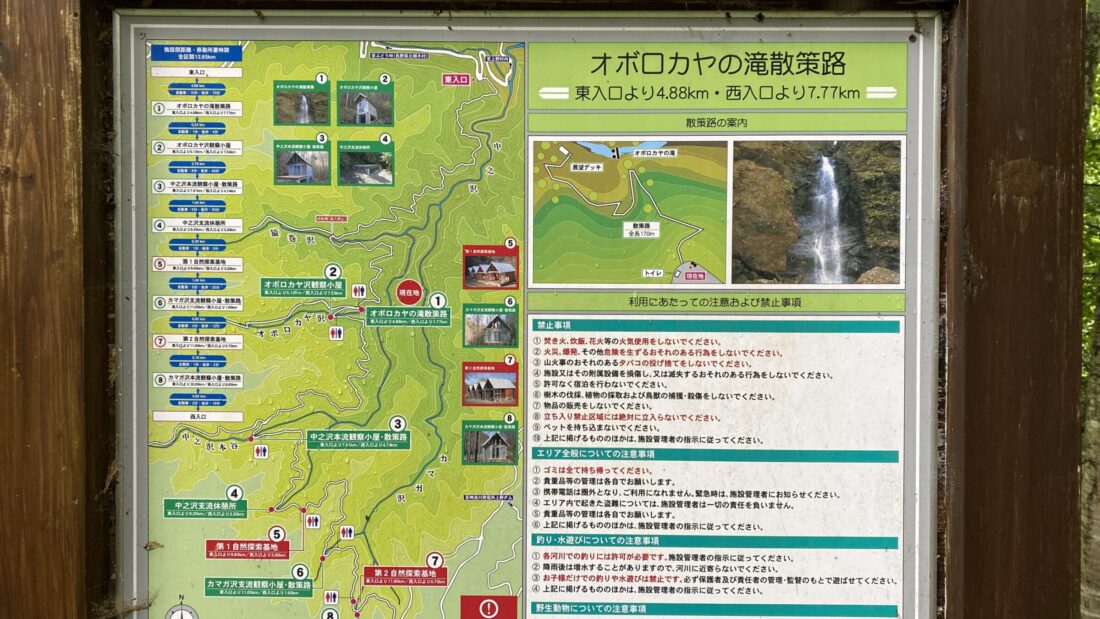
When we got out of the van, we took some time to breath and stretch together, and hear about some of the local plants. Our guide showed us a sansho plant, whose seeds are used as a spice sometimes called Japanese pepper. He got us smelling the leaves—they were fragrant!—and mentioned that we would probably have some sansho in our lunch that day.
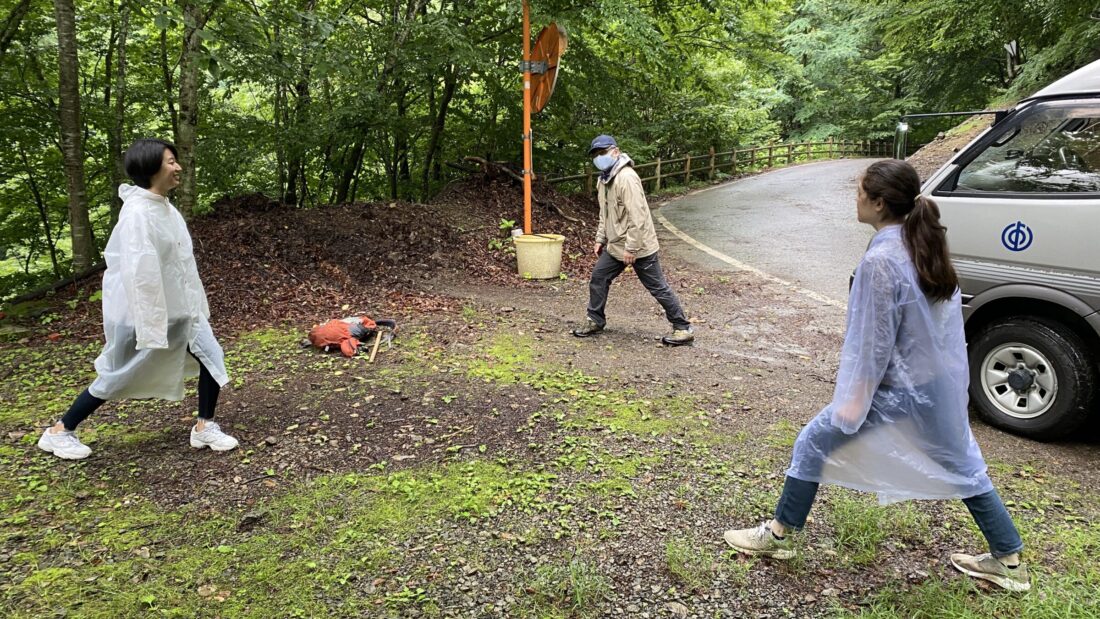
There was also a bathroom—no running water, but at least a space to take care of your business in a little hut. There were several such bathrooms throughout the course, so it was a bit more comfortable in that respect than most trails out the middle of the forest.
Once we were oriented and grounded in the sights and smells around us, we started down the first part of the course. It was a long series of steep wooden steps, and our guide showed us how to safely descend even in the somewhat slippery conditions. He also gave us gloves so our hands wouldn’t get dirty holding onto the railings.
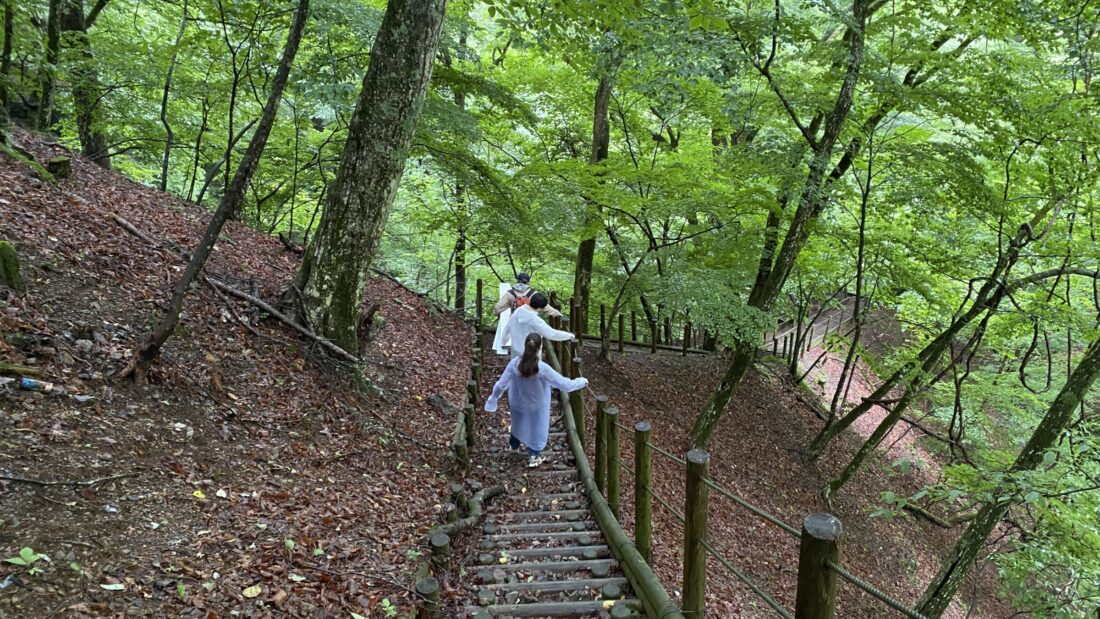
We descended through several minutes of beautiful views of the forest and river. The guide kept the pace slow and steady, to make sure the walk was comfortable for all ages and fitness levels.
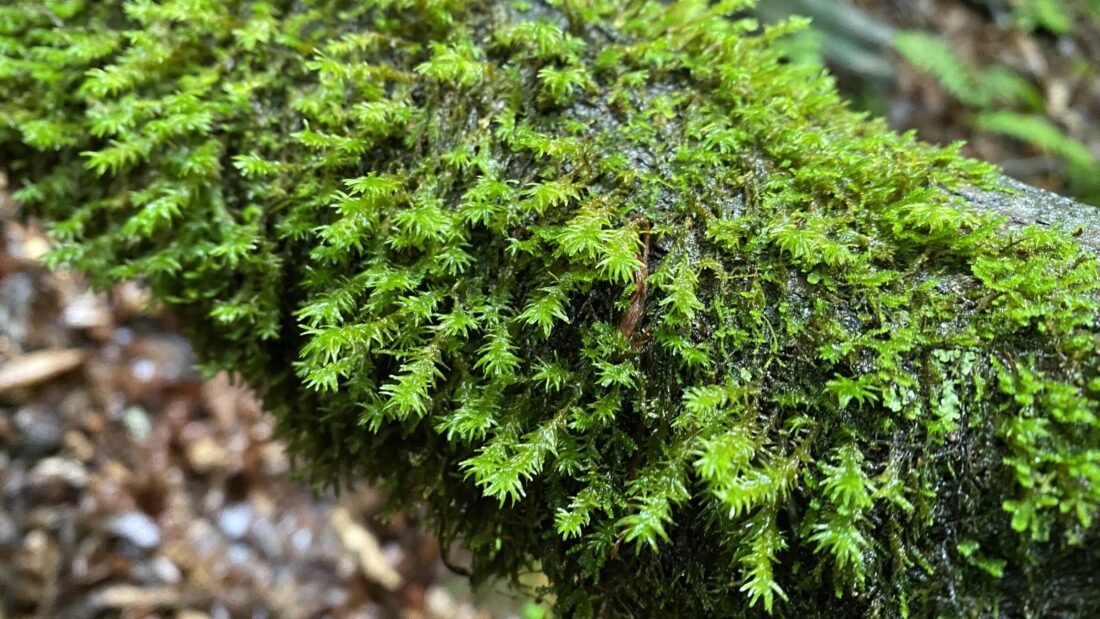
When we got to the bottom, we found ourselves at a large waterfall with a wooden viewing platform next to it.
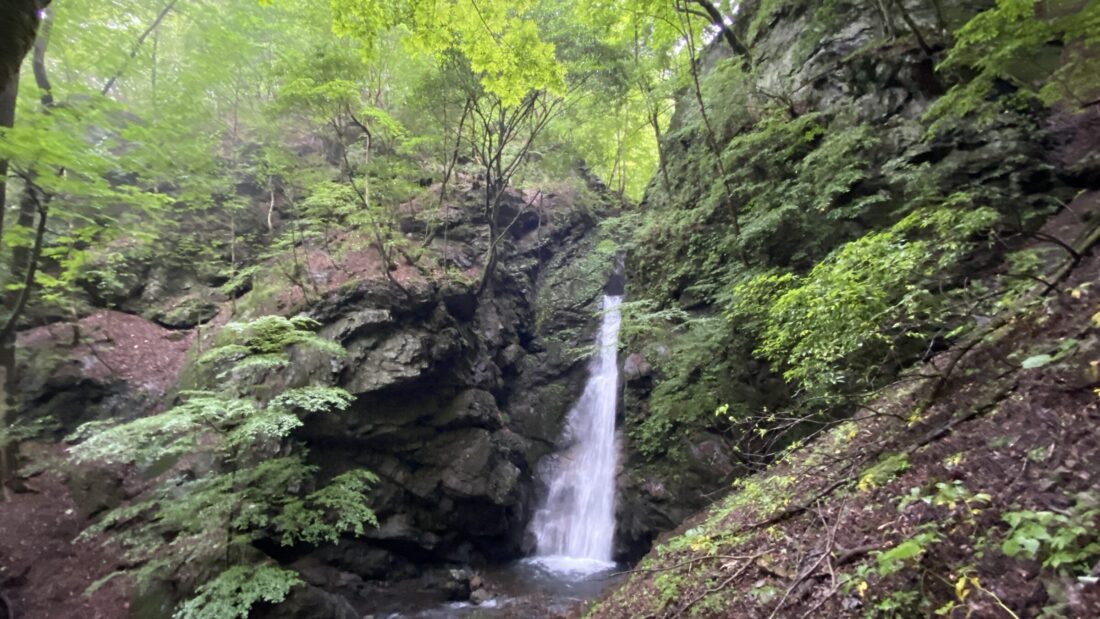
The guide had brought mats to put on the damp wood so we could lie down on the platform. We took our shoes off, got on the mats, and stared up at the lime green leaves above us.
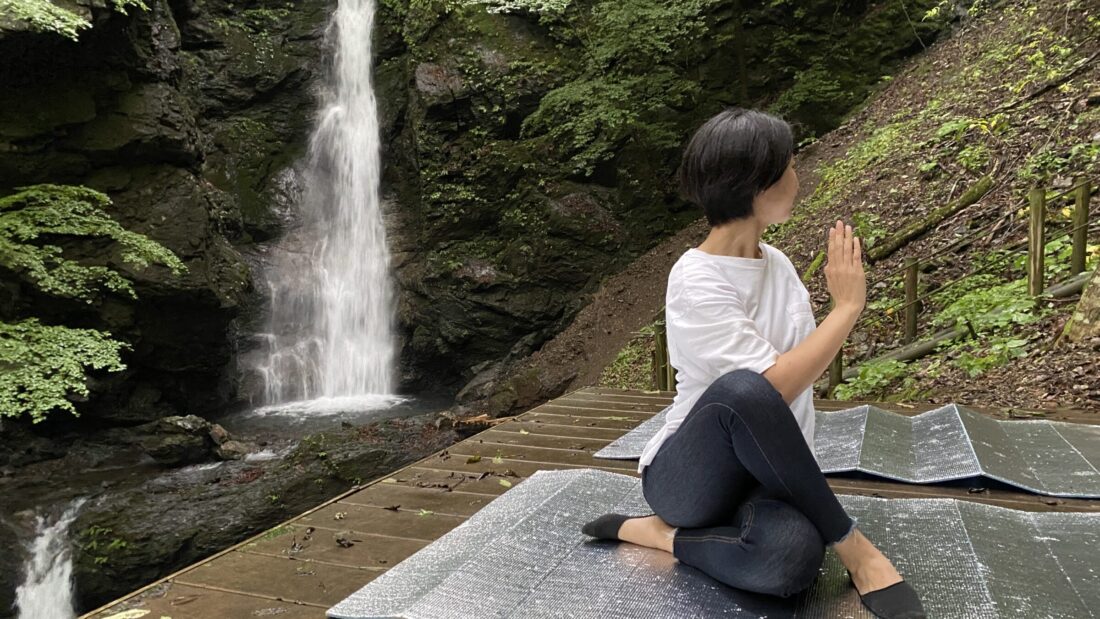
The guide encouraged us to relax and meditate if we wanted to. When I closed my eyes, I heard the sound of the waterfall and practically felt the mist from it on my face.
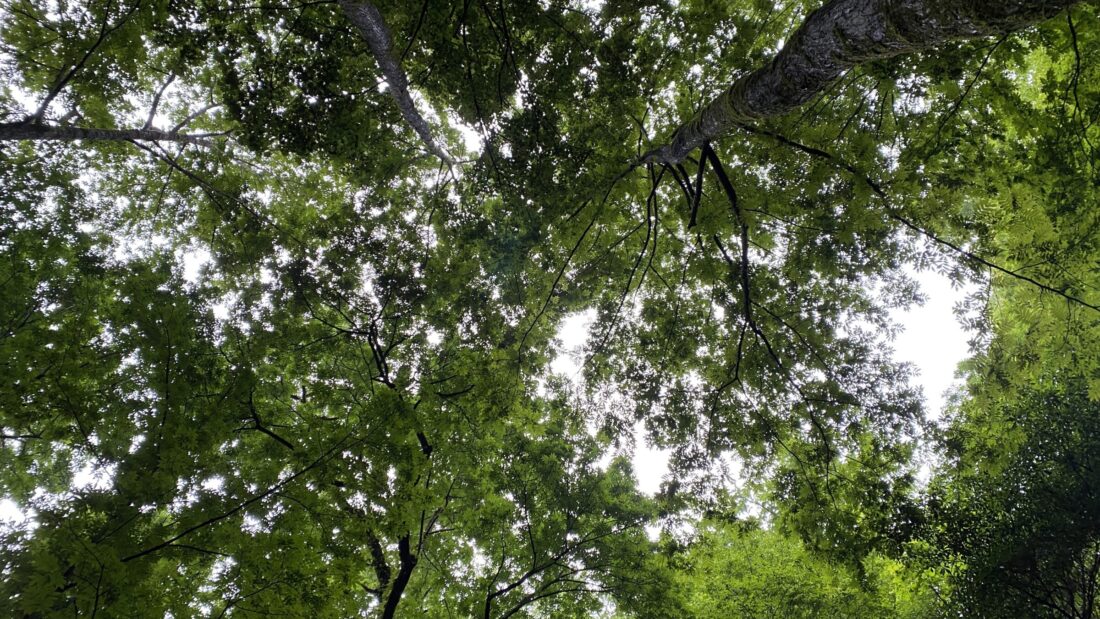
The guide told us the waterfall is called Oborogaya Falls, and that the name comes from the Ainu language. He told us about the trees in vicinity as well, including a special type of ash tree called shioji in Japanese.
After having our moment on the platform, we walked right up next to the falls. Then we could really feel the mist! We got a bit damp, honestly, so I would again recommend rain gear, even on a clear day—or just don’t get too close. It was nice and cool up next to the waterfall, which is nice during the summer, but can be a bit chilly in the fall or spring.
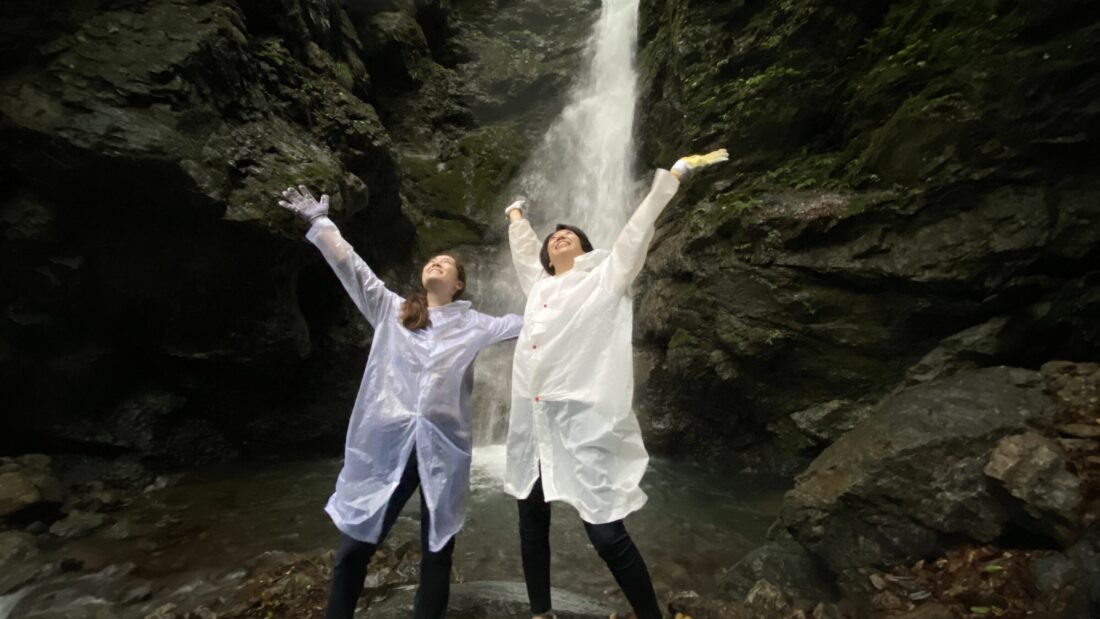
The guide let us back up the stairs, again at a nice relaxing pace. We all got back in the van, and he drove us to a little hut where we would eat lunch. We got to dig in to some bento lunch boxes (included with the session) from a local fish restaurant.
Vegetarian options are also available! Just make sure you inquire in advance, since the bentos are prepared beforehand.
After lunch, we walked into the nearby forest, through no set path as far as I could tell. The guide led us over logs and across a stream, and we chatted and let our minds wander. Just a note: this part was quite muddy. We walked all the way to the border with Nagano—it didn’t take very long, since the Nakanosawa area straddles Gunma and Nagano—and then headed back to the van.
We walked up the road a bit until we could see the valley. It was time to wind down, so the guide led us through some more breathing exercises. We finished off the excursion by yelling at the top of our lungs to try and hear an echo off the other side of the valley. It was a great way to let off steam!
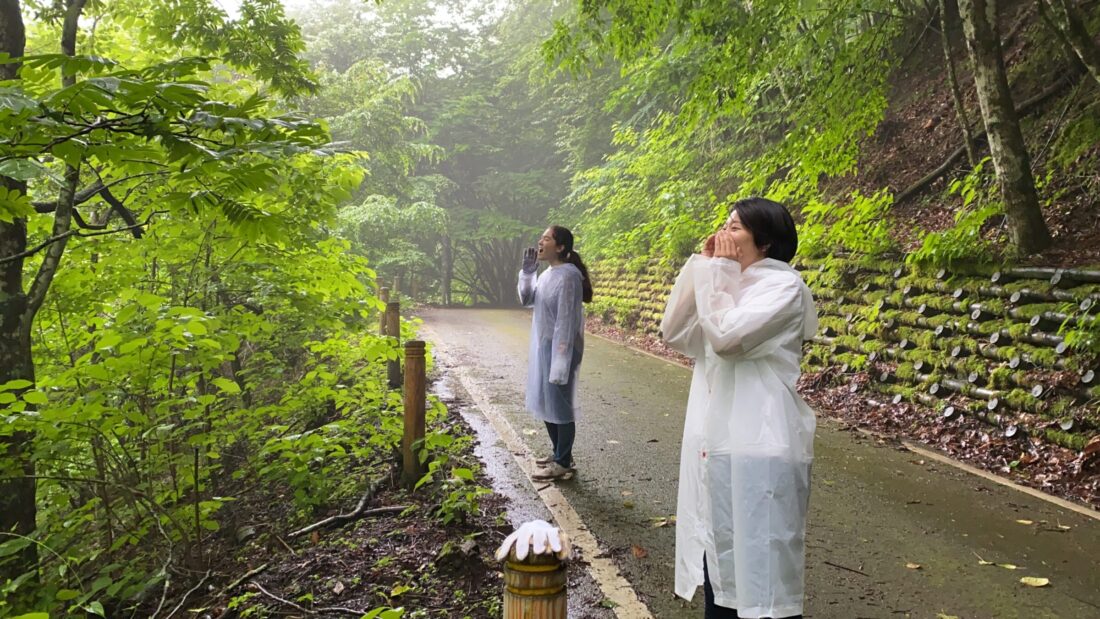
This was the end of our walk, so our guide drove us back out of the woods and to our final stop for the day: Shioji no Yu all-natural hot spring bath.
Shioji no Yu hot springs
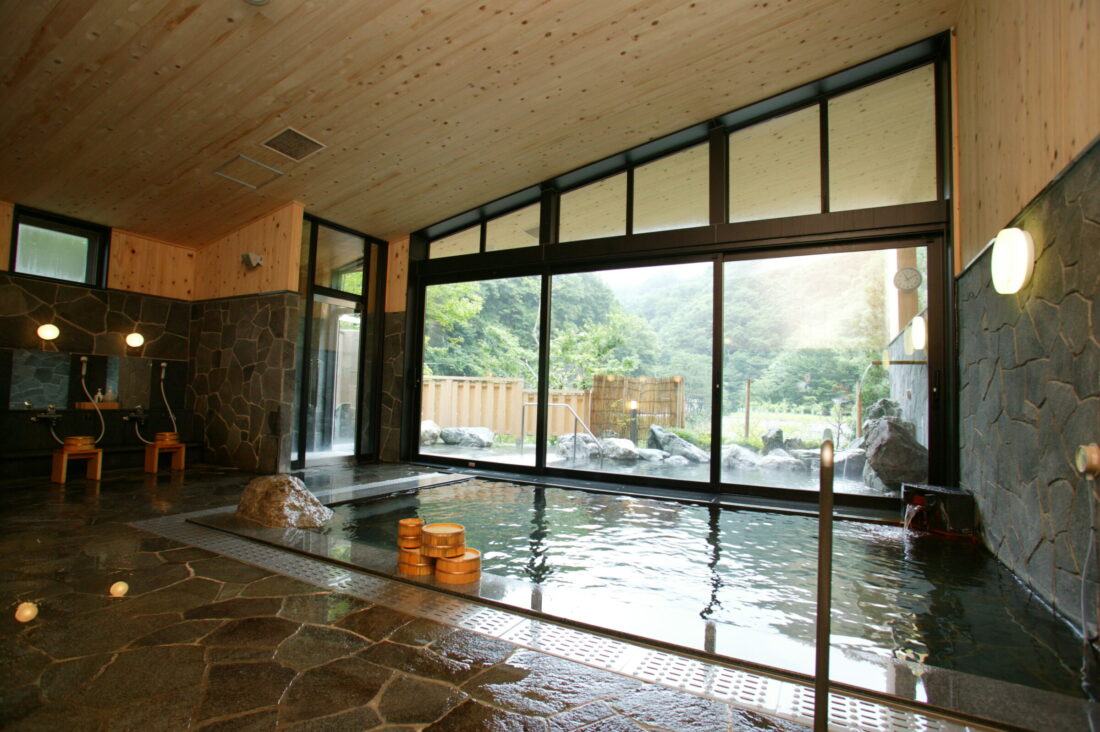
The Japanese-style building was quiet and super clean. The bath itself was quite spacious. There were enough shower stations to accommodate about 10 people at once, and a large indoor bath. There was also an outdoor bath with a view of the mountains—I liked this one because it was lined with cool-looking red rocks.
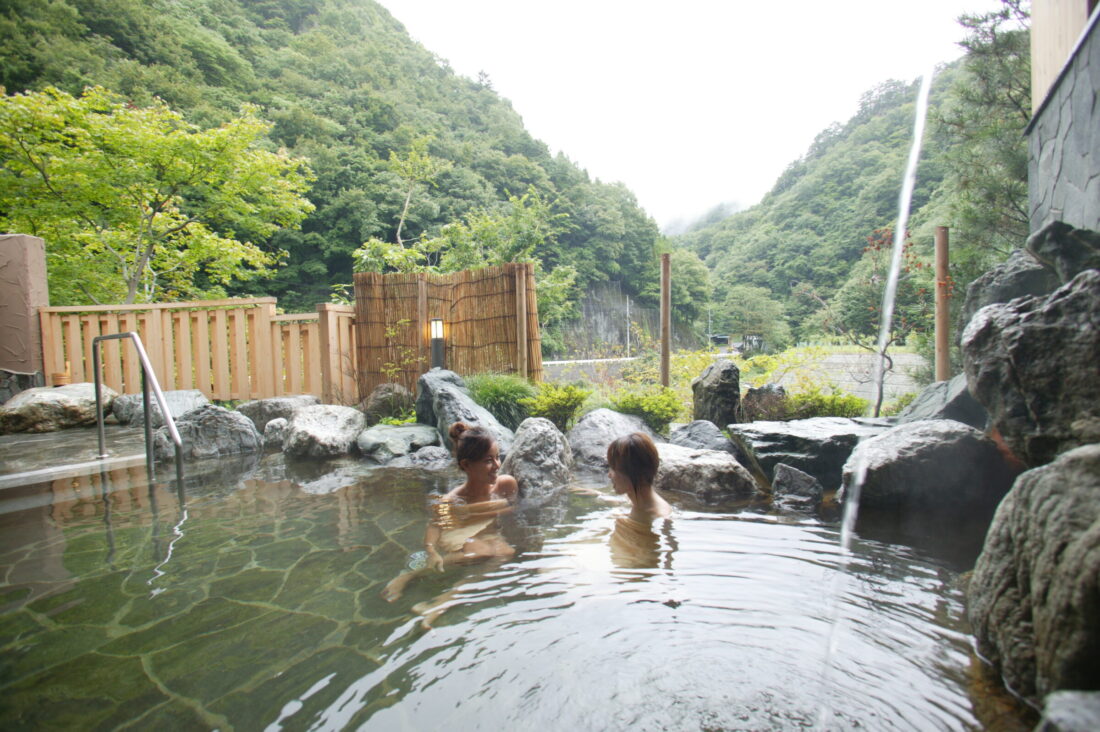
The water was nice and hot after spending the day out in the rain. This particular hot spring water has a high concentration of minerals that are good for your skin.
Soup and shampoo are provided, but no conditioner, so make sure to bring your own if you want. Also, as like most hot springs in Japan, you’re expected to bring your own towel. If you forget, though, you can buy a long hand towel for 200 yen.
Shioji no Yu also has a Japanese-style lounge to relax in. You can order a bite to eat here, with options including curry, udon, soba, and set meals. Most of the cuisine features Uenomura’s specialty inobuta meat, which is a cross between a pig and a wild boar. I had some inobuta udon noodle soup. The meat tastes like pork, but richer!
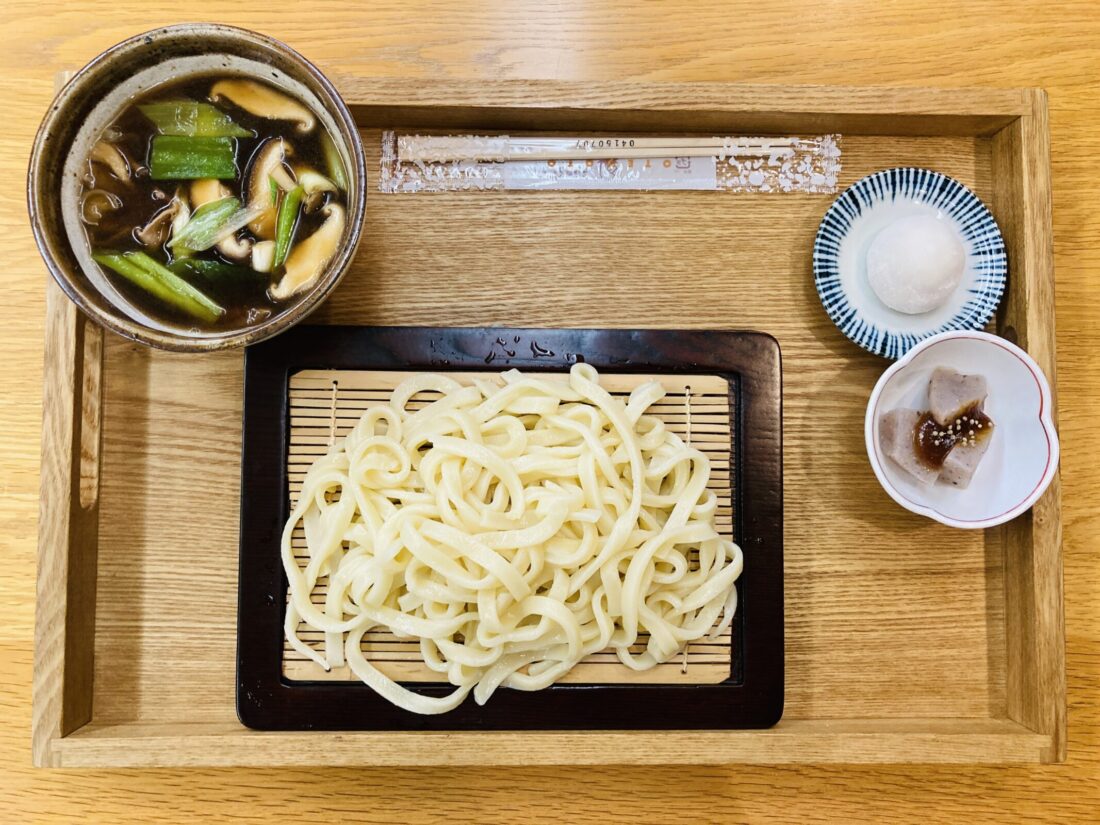
There’s also a small souvenir corner.
Final thoughts
Overall, I found our day of forest therapy to be a great experience. By the end of the day, I definitely felt more relaxed and more ready to tackle tomorrow!
Group Forest Therapy sessions are held once or twice a month during most parts of the year. They also take reservations for private groups of 15 people or more.
Forest Therapy – Practical Details
Price: ¥6,800 per person (includes tax)
Min/max participants: 3 – 9 people per session
Includes: guide fees, lunch, hot spring use fee, insurance
Notes
- Please reserve your spot at least 2 weeks in advance.
- In you require free pick up from Shimonita Station, please let us know when you make your reservation.
- We can also accommodate group reservations, so don’t hesitate to inquire.
- We reserve the right to cancel for bad weather or when the trail is not in suitable condition.
- The route tends to change from time to time.
For reservations and questions, contact the Uenomura Local Industry Information Center at the Mori no Taiken-kan activity center
Address: 310-1 Narahara, Ueno, Tano District, Gunma 370-1617
TEL: 0274-20-7070
Schedule
9:30 Meet at Shimonita Station on the Joshin Railway, and board the van for Uenomura
10:00 For those coming by car, it’s also possible to meet at Kawa no Eki Visitors’ Center
11:00 Enter the Nakanosawa Valley and start your forest therapy experience
Lunch in the forest
14:30 Bath time at Shioji no Yu
16:00 Return to Kawa no Eki (for those with cars)
16:30 Return to Shimonita Station
Note schedule and route may change due to road conditions and other factors.
Getting there from Tokyo
Take the Shinkansen (bullet train) from Tokyo to Takasaki Station (1 hr)
At Takasaki, transfer to the Joshin Railway. You’ll have to exit the JR ticket gates and go to the Joshin Railway tracks in a different part of the station. The Joshin does not take IC train cards (Suica, Pasmo, etc.), so make sure to buy a ticket at the Joshin ticket machine.
Take the Joshin all the way to the last stop, Shimonita Station (1 hr)
The therapy course can start with free pickup from Shinomita Station, but make sure to request pickup when you sign up! If you don’t let them know in advance, they might not be able to meet you at Shimonita.
What to bring
- Clothes you can move around in, that you don’t mind getting a bit muddy
- Sneakers or hiking books
- A jacket to keep warm (it can get chilly even in the summer)
- Bug spray
- A change of clothes and a towel (if you want to bathe at the hot spring)
Shioji no Yu hot springs – Details
| Address | 3487-2 Narahara, Ueno, Tano District, Gunma 370-1617 |
| Hours | Wed – Mon: 11:00 AM – 8:00 PM (last entry 7:30) Tue: Closed* *When Tuesday is a public holiday, the facility will be open on that Tuesday and then closed the next day. Irregular closures during winter. |
| Entrance fee | Adults (12 – 69 years old) ¥600 Children (3 – 11) ¥400 Seniors (70+) ¥500 |
NOTE bath entrance is included with forest therapy
More Summer Itineraries
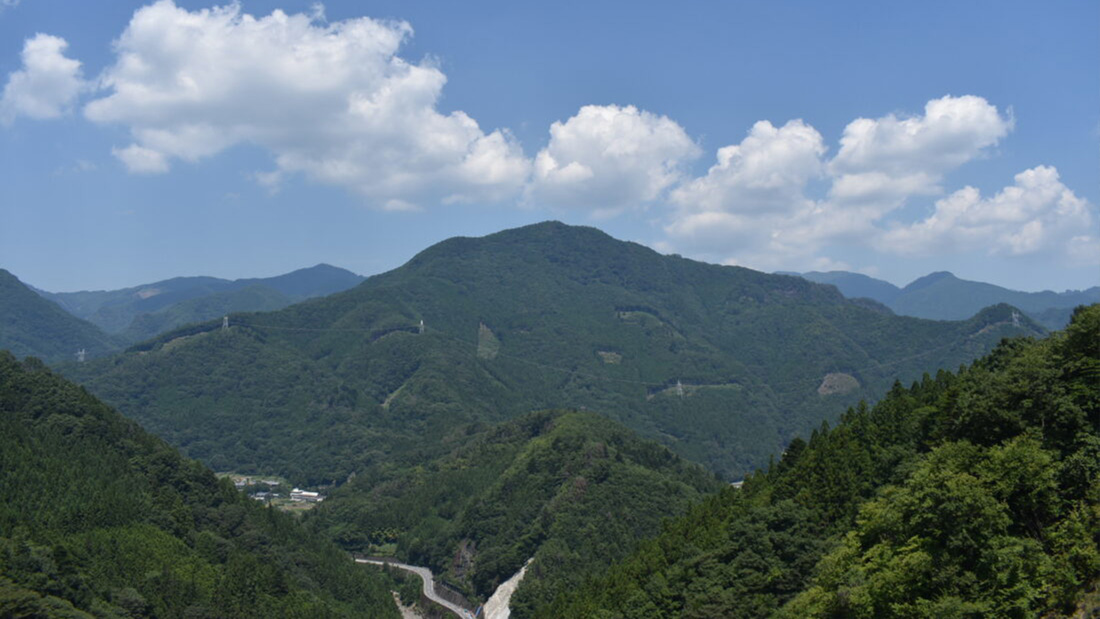
2-day Summer Itinerary: Cabin Camping and Leisurely Fun
Perfect for a family or group of friends who want to experience the main attractions of Uenomura, and some very comfortable cabins.
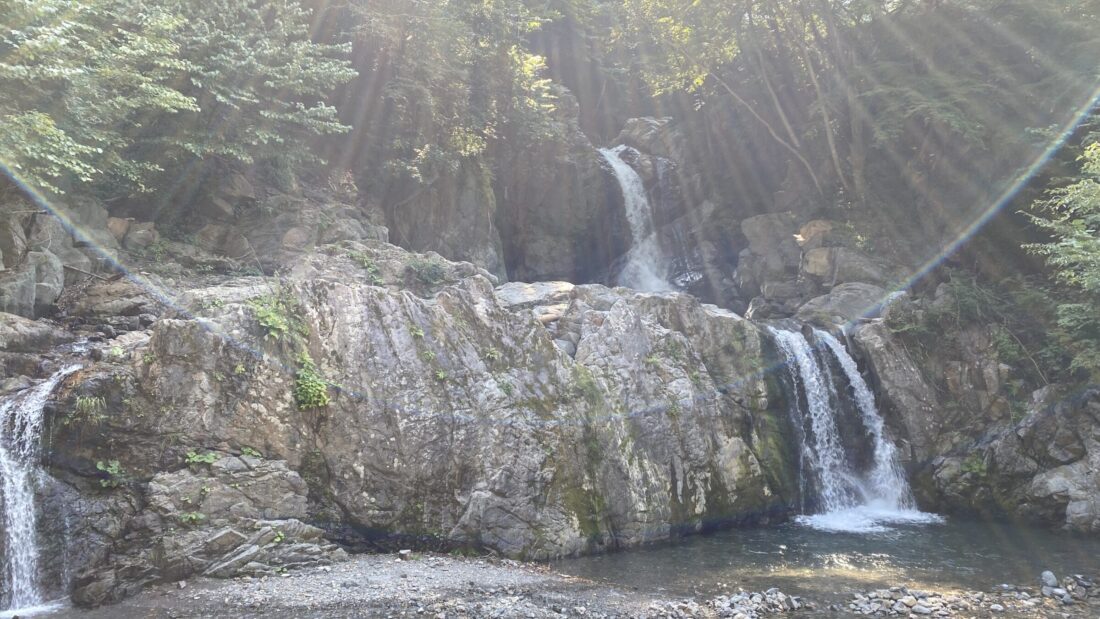
River Fun 1-Day Itinerary
Sample several spots on the Kanna River. These clear waters are a great place to play, swim, wade, and float.
